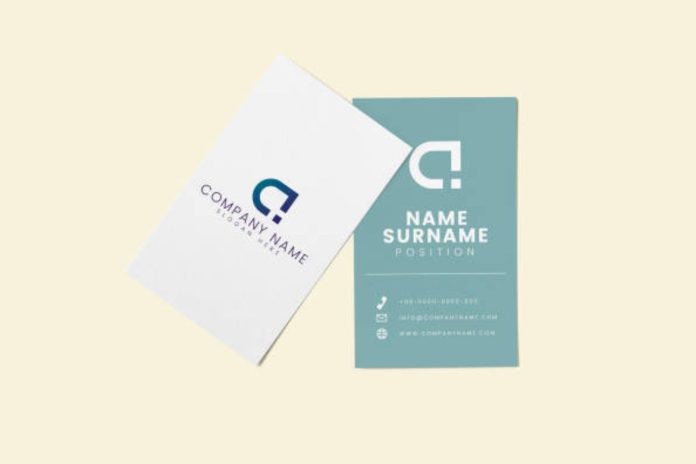Creating an impactful business card is a blend of art and strategy. In the digital age, where virtual connections are prevalent, a well-designed business card still holds significant power. It’s not just a piece of paper; it’s a tangible representation of your brand. Here are some essential tips to ensure your business cards printing process is both effective and impressive.
1. Understand the Purpose of Your Business Card
Before diving into design and printing, it’s crucial to understand what you want your business card to achieve. Is it to make a memorable first impression? Provide essential contact information? Promote your brand? Clearly defining the purpose will guide your design decisions and printing choices.
2. Keep Your Design Simple and Clean
Simplicity is key in business card design. Avoid cluttering your card with too much information or graphics. Focus on including essential details such as your name, title, company name, phone number, email address, and website. A clean, uncluttered design makes your card easy to read and more aesthetically pleasing.
3. Choose the Right Font and Size
Typography plays a significant role in the readability and overall look of your business card. Select fonts that are professional and easy to read. Avoid overly decorative fonts that can be hard to decipher. Typically, a font size between 10 and 12 points is recommended for readability.
4. Incorporate Your Brand Elements
Your business card should reflect your brand’s identity. Use your brand’s colors, logo, and typography to ensure consistency with your other marketing materials. This helps in reinforcing your brand and making your business card instantly recognizable.
5. Use High-Quality Paper
The quality of paper you choose for your business cards printing speaks volumes about your brand. Opt for a sturdy, high-quality paper that feels substantial in hand. Thicker cards are more durable and give a sense of quality and professionalism.
6. Consider Special Finishes
Special finishes can add a touch of elegance and sophistication to your business card. Options like embossing, debossing, foil stamping, and spot UV coating can make your card stand out. However, use these finishes sparingly to maintain a professional appearance.
7. Ensure High-Resolution Images
If your business card design includes images or graphics, make sure they are high-resolution. Low-resolution images can appear blurry or pixelated when printed, which can detract from the professionalism of your card. Aim for at least 300 dpi (dots per inch) for the best print quality.
8. Optimize Your Layout
Pay attention to the layout of your business card. Balance the text and visual elements to create a harmonious design. Leave some white space to prevent your card from looking too crowded. This not only enhances readability but also gives a clean, modern look.
9. Proofread Carefully
Nothing undermines professionalism like a typo or incorrect information on a business card. Before sending your design to print, double-check all the details. Ensure that names, titles, contact information, and website URLs are correct and free of errors.
10. Select the Appropriate Printing Method
There are various printing methods available, such as digital printing, offset printing, and letterpress. Each method has its own advantages and cost implications. Digital printing is cost-effective for small quantities, while offset printing is ideal for larger runs and offers superior quality. Letterpress printing adds a tactile element and a high-end feel to your cards.
11. Choose the Right Size and Shape
While standard business card dimensions are 3.5 x 2 inches, don’t be afraid to experiment with different shapes and sizes to make your card stand out. Square cards, rounded corners, or even custom die-cut shapes can add a unique touch. Just ensure the design is practical and fits into standard cardholders.
12. Use Both Sides Wisely
Make the most of both sides of your business card. The front can contain your name, title, and contact information, while the back can showcase your logo, tagline, or a brief description of your services. This maximizes the space and provides more information without overcrowding.
13. Test Your Design
Before committing to a large print run, print a few test copies to see how your design looks in physical form. This allows you to check the colors, layout, and overall appearance, and make any necessary adjustments before the final print.
14. Seek Professional Help If Needed
If you’re not confident in your design skills, consider hiring a professional graphic designer. They can help create a polished, professional-looking business card that accurately represents your brand. Investing in a well-designed card can pay off in making a lasting impression.
15. Sustainability Matters
In today’s eco-conscious world, consider using recycled paper or environmentally friendly printing options. Not only does this show your commitment to sustainability, but it can also resonate well with clients who value eco-friendly practices.
Conclusion
Effective business cards printing is an essential aspect of creating a professional image and leaving a lasting impression. By following these tips, you can ensure your business cards are not only visually appealing but also practical and informative.
Remember, your business card is often the first impression potential clients will have of your brand. Investing time and effort into creating a high-quality card can significantly impact your business’s success.
And if you’re looking for other print materials to complement your business cards, consider flyers printing Melbourne for promotional needs that align with your brand’s quality and style. Effective print materials, from business cards to flyers, play a crucial role in your overall marketing strategy.








